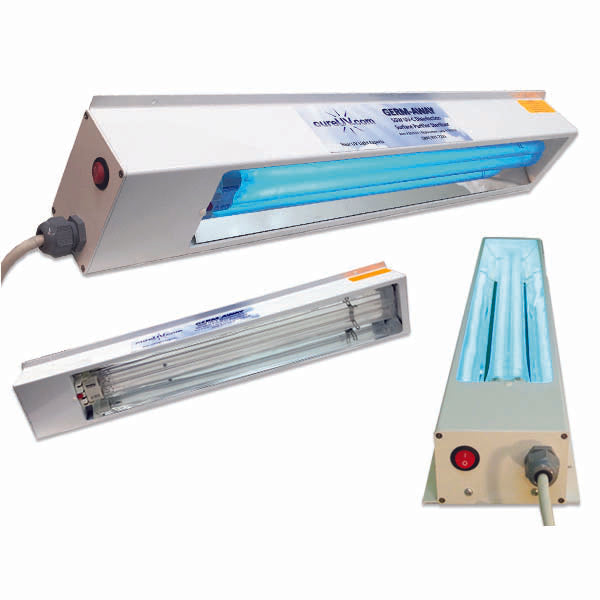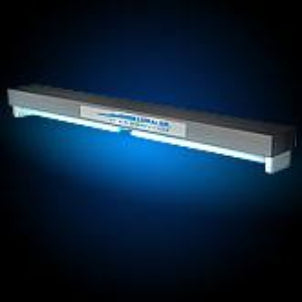Unleashing the Power of UV Surface Disinfection: Securing Against Hazardous Virus
Wiki Article
Revealing the Benefits of UV Sanitation: Ensuring Tidy and Sanitized Spaces
While conventional cleaning approaches have long been depended upon, innovations in innovation have presented a cutting-edge option that guarantees clean and sterilized areas: UV disinfection. Additionally, we will dig right into the safety considerations that must be taken right into account when implementing UV sanitation. Prepare to uncover a new measurement of sanitation and discover the untapped potential of UV sanitation.
The Scientific Research Behind UV Disinfection
UV sanitation is a medically proven method that makes use of ultraviolet light to remove damaging microbes from surfaces and water. The scientific research behind UV sanitation hinges on the ability of UV-C light to damage the DNA and RNA of bacteria, providing them not able to duplicate and triggering their eventual death. UV-C light falls within the wavelength array of 200 to 280 nanometers, which is highly reliable in damaging bacteria, viruses, and various other virus.When revealed to UV-C light, the hereditary product of microorganisms takes in the energy from the light, causing the development of thymine dimers. These dimers interfere with the typical replication and transcription processes of the bacteria, preventing their ability to reproduce and survive (uv surface disinfection). The DNA and RNA damages created by UV-C light is dangerous to the microbes, making UV disinfection a reputable and efficient method for killing a vast variety of virus
UV disinfection is particularly helpful in atmospheres where traditional chemical disinfectants might be inefficient or unwise. It is a non-chemical approach that does not leave any kind of deposits or hazardous spin-offs, making it risk-free for use in food processing, health care centers, water therapy plants, and numerous other industries. Moreover, UV sanitation is eco-friendly, as it does not add to the development of antibiotic-resistant germs or various other unsafe toxins.
Efficiency of UV Disinfection on Virus
The performance of UV sanitation in getting rid of microorganisms has been extensively researched and verified in numerous clinical researches. UV radiation has the ability to inactivate a large range of microorganisms, including fungis, germs, and viruses, by harming their DNA or RNA. This avoids them from duplicating and triggering infections.One research study released in the American Journal of Infection Control located that UV sanitation worked in minimizing the presence of several drug-resistant microorganisms in medical facility areas. Another research study conducted by the National Institute for Occupational Safety and Wellness demonstrated that UV sanitation had the ability to get rid of 99.9% of the flu virus on surface areas.
UV disinfection has actually additionally revealed promise in combating the spread of healthcare-associated infections (HAIs) According to a research published in The Lancet, making use of UV-C light along with basic cleansing protocols significantly reduced the occurrence of HAIs in a medical facility setup.
In addition, UV sanitation has actually shown to be reliable versus emerging microorganisms, such as the severe intense respiratory disorder coronavirus 2 (SARS-CoV-2), which creates COVID-19. A research study carried out by the National Emerging Infectious Illness Laboratories demonstrated that UV-C light can inactivate the virus on surface areas within secs.
Applications of UV Sanitation in Various Settings
With its tested performance in removing pathogens, UV disinfection has actually discovered applications in a variety of setups. UV sanitation is also advantageous in water therapy plants, where it is used to kill damaging microorganisms and offer risk-free drinking water.An additional vital application of UV disinfection impends filtration market. UV air purifiers are used in household, commercial, and industrial settings to get rid of airborne bacteria, viruses, and mold and mildew spores. This modern technology is specifically valuable in environments where people are more at risk to breathing infections, such as hospitals, institutions, and workplace buildings.
Moreover, UV sanitation is increasingly being made use of in mass click for more transit systems, such as trains and buses, to keep tidy and sterilized rooms for passengers. UV light is used to decontaminate surface areas and air inside the automobiles, decreasing the danger of spreading out infectious diseases.
Benefits of UV Sanitation Over Conventional Approaches
In contrast to typical methods, UV disinfection offers a range of unique advantages that make it a preferable choice in different sectors and settings. One substantial advantage is its effectiveness against a broad selection of microbes, including fungi, bacteria, and viruses. Unlike chemical disinfectants that might have limited efficacy against certain pathogens, UV sanitation is a non-selective process that can kill or suspend a wide range of harmful microorganisms.
An additional advantage of UV sanitation is its capacity to supply fast and effective disinfection. Traditional disinfection approaches commonly require longer call times or several steps to accomplish the preferred level of sanitation. In contrast, UV light can offer continual and prompt sanitation, reducing downtime and enhancing performance in various applications.
UV disinfection additionally supplies a secure and environmentally pleasant choice to conventional sanitation techniques. uv surface disinfection. Unlike chemical representatives, UV light does not leave behind any type of harmful residues or byproducts, making it ideal for use in sensitive settings such as food handling centers, healthcare settings, and water therapy plants
Moreover, UV sanitation is a cost-effective service in the long run. While the in advance investment for UV disinfection systems might be higher than conventional methods, the functional expenses are commonly reduced. UV lights have a lengthy life-span and call for minimal upkeep, causing decreased labor and replacement expenses.
Safety And Security Considerations for UV Sanitation
Thinking about the possible dangers related to UV sanitation, it is vital to deal with the security considerations included in applying this innovation. UV sanitation utilizes ultraviolet light to eliminate or suspend microorganisms, making it an efficient approach for sanitizing numerous surface areas and things. It is essential to recognize that UV radiation can additionally pose threats to human wellness if appropriate safety procedures are not complied with.First and foremost, straight exposure to UV radiation can create harm to the skin and eyes. Prolonged exposure can result in sunburn, skin damage, and even a raised danger of creating skin cancer cells. It is important to guarantee that UV disinfection systems are effectively confined and furnished with security features such as automated shut-off devices or movement sensors to prevent unintended direct exposure.

Additionally, correct training and education are essential for those in charge of operating UV disinfection systems. They need to be conscious of the possible risks, recognize the safety procedures, and know exactly how to take care of and maintain the devices correctly.
Final Thought
To conclude, UV disinfection uses countless benefits in making sure tidy and sanitized areas. Its performance in eliminating microorganisms has actually been confirmed through scientific study. UV sanitation can be applied in various setups, consisting of healthcare facilities, food handling plants, and water therapy systems. Contrasted to useful reference traditional techniques, UV sanitation has benefits such as faster sanitation times, marginal chemical use, and no hazardous by-products. Safety and security factors to consider should be thought about to stop potential risks related to UV direct exposure.UV sanitation is a clinically tried and tested approach that makes use of ultraviolet light to eliminate damaging microbes from surfaces and water. The DNA and RNA damage caused by UV-C light is lethal to the microorganisms, making UV disinfection a reliable and effective method for killing a wide range of virus.
An additional benefit of UV disinfection is its ability to provide effective and fast disinfection. UV disinfection utilizes ultraviolet light to eliminate or suspend bacteria, making it an efficient approach for sanitizing numerous surface areas and items. Compared to typical approaches, UV disinfection has benefits such as faster sanitation times, minimal chemical use, and no unsafe results.
Report this wiki page